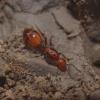I recently came to own a 120g(2'x4') aquarium+stand that I'm looking to convert into a formicarium and I was wondering if anyone has ever had success with hosting multiple colonies in a sufficiently sized outworld? I understand conflicts on the surface might be inevitable, but if there are species that won't take it to the next level and actually raid nests, it seems like it might work.
Has anyone tried this before? If so, does anyone have any recommended species (Michigan)?
Worst case, I can divide the outworld into two, but wanted to get opinions before I went there.
Thanks everyone!
























